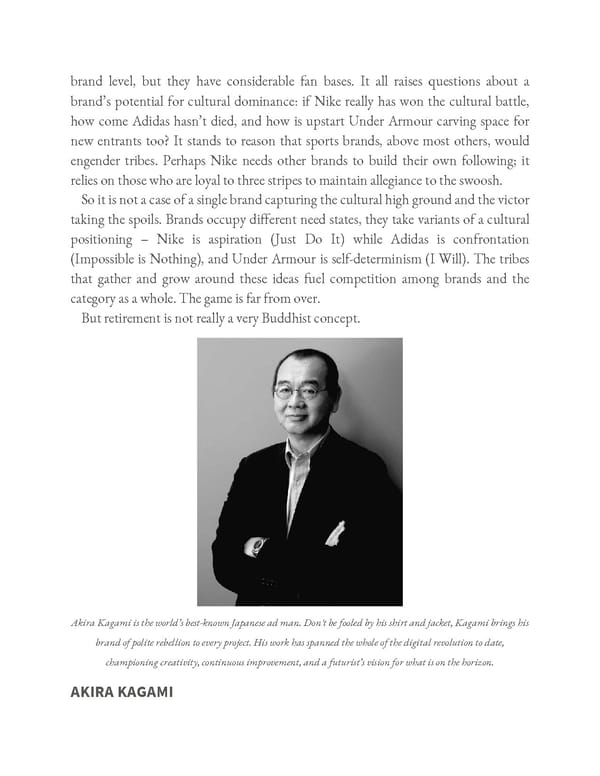brand level, but they have considerable fan bases. It all raises questions about a brand’s potential for cultural dominance: if Nike really has won the cultural battle, how come Adidas hasn’t died, and how is upstart Under Armour carving space for new entrants too? It stands to reason that sports brands, above most others, would engender tribes. Perhaps Nike needs other brands to build their own following; it relies on those who are loyal to three stripes to maintain allegiance to the swoosh. So it is not a case of a single brand capturing the cultural high ground and the victor taking the spoils. Brands occupy different need states, they take variants of a cultural positioning – Nike is aspiration (Just Do It) while Adidas is confrontation (Impossible is Nothing), and Under Armour is self‑determinism (I Will). The tribes that gather and grow around these ideas fuel competition among brands and the category as a whole. The game is far from over. But retirement is not really a very Buddhist concept. Akira Kagami is the world’s best-known Japanese ad man. Don't be fooled by his shirt and jacket, Kagami brings his brand of polite rebellion to every project. His work has spanned the whole of the digital revolution to date, championing creativity, continuous improvement, and a futurist’s vision for what is on the horizon. AKIRA KAGAMI
 Ogilvy on Advertising in the Digital Age Page 365 Page 367
Ogilvy on Advertising in the Digital Age Page 365 Page 367